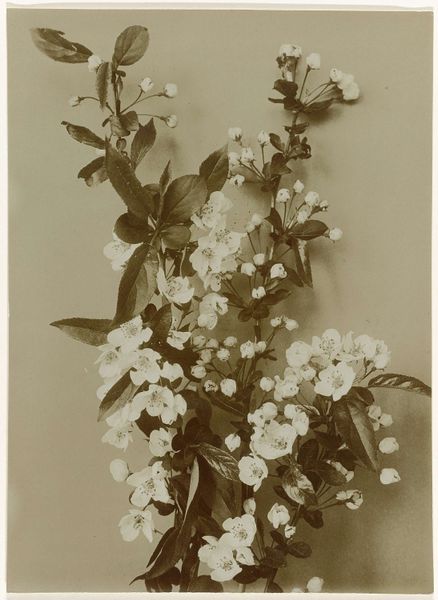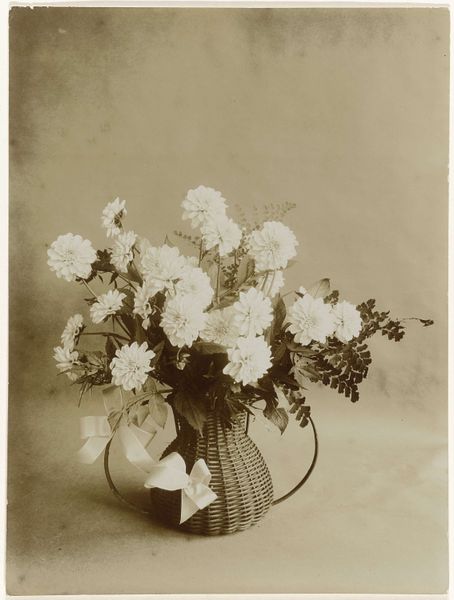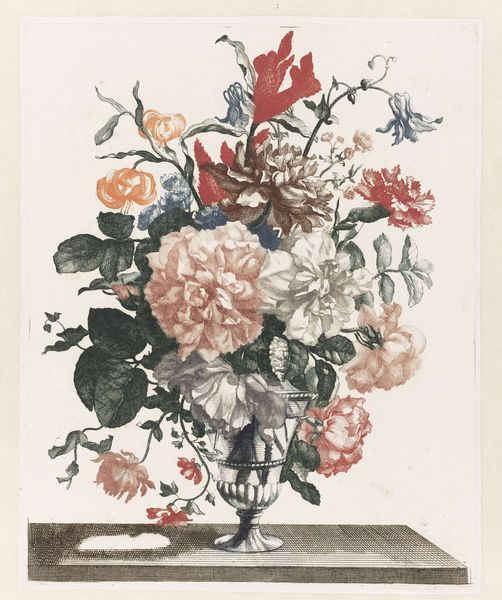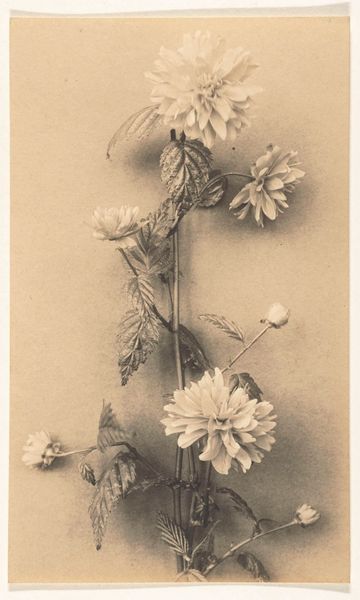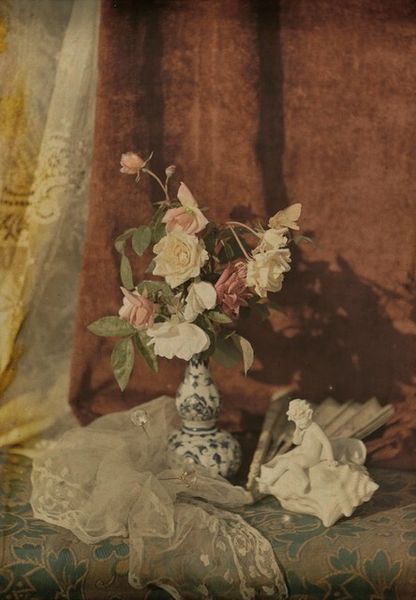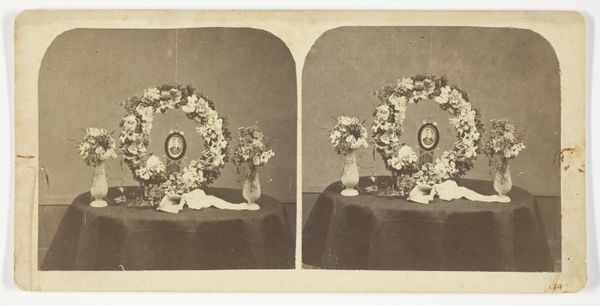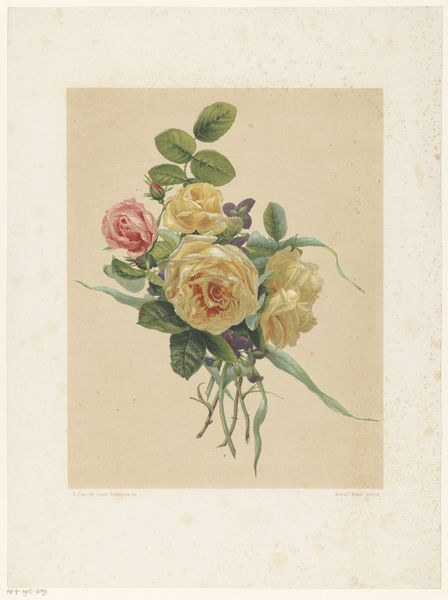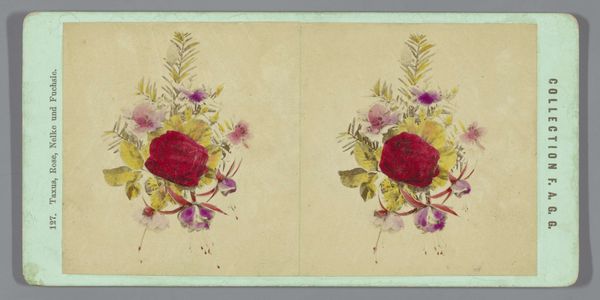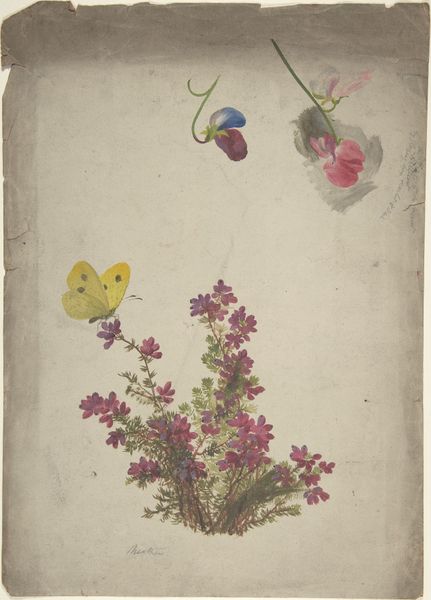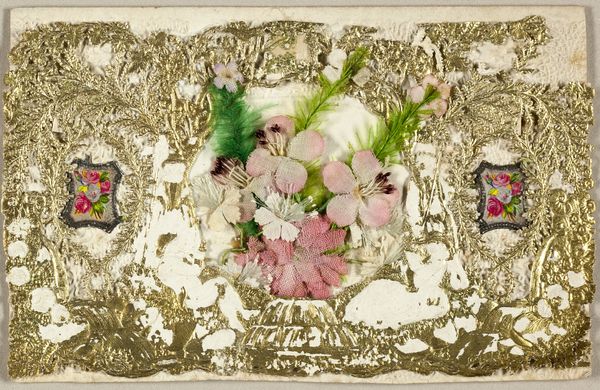
Fotoreproductie van (vermoedelijk) een tekening van een met een bloemenkrans versierd kruis met daaronder dichtregels van P.A. de Génestet c. 1870 - 1890
0:00
0:00
Dimensions: height 104 mm, width 62 mm
Copyright: Rijks Museum: Open Domain
Editor: This photomechanical print, "Fotoreproductie van (vermoedelijk) een tekening van een met een bloemenkrans versierd kruis met daaronder dichtregels van P.A. de Génestet," dates to around 1870-1890. The central image is a cross adorned with roses, it's so visually simple and somewhat melancholy in tone. How would you interpret this work formally? Curator: Initially, the composition strikes me. A stark, geometric cross provides the structure. The floral arrangement, while delicate, serves to frame and soften the rigidity. Note the careful arrangement of colors—the stark white of the cross balanced against the darker tones of the leaves, and then punctuated by the saturated reds and varied pastels in the roses. The photograph’s own tonal range adds another layer. The fading and desaturation contribute to an overall effect. Editor: So, you see the structure as almost a dialogue between the rigid and the organic? Curator: Precisely. Look how the light models the form of the cross, giving it dimensionality, in direct contrast to the flat, graphic quality of the printed poem below. The relationship between line and volume are especially critical in a piece like this. The textures are implied through the printing process, allowing the flowers a slight blurring that adds to that softness. The stark typography grounds the composition as a memorial object. What meaning emerges through that formal juxtaposition? Editor: It's interesting how you focus on the purely visual elements, how they interact with one another without looking outside the image for meaning. I can definitely see the tension and balance you're talking about now, and appreciate that. Curator: Indeed. These formal elements invite further exploration into function and purpose, and by observing such visual strategies, new potential avenues for interpretations arise.
Comments
No comments
Be the first to comment and join the conversation on the ultimate creative platform.
